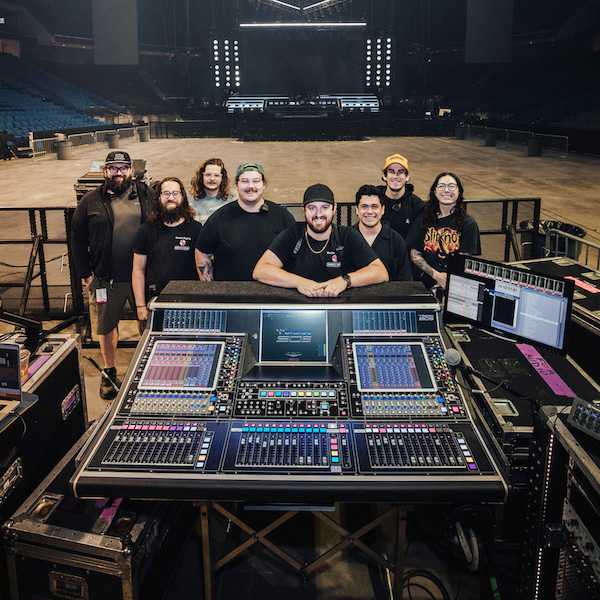NF takes DiGiCo desks on a mission of Hope
- Details

The desks were reportedly chosen for a number of factors: sound quality, as well as programmability and flexibility - critical capabilities for a tour so heavily dependent upon tracks and a thunderous drum kit that takes up as much as half of the production’s 60-plus inputs.
“The biggest thing for me with the SD5 is that the amount of programming you can do on these consoles is incredible,” says Stoker, who also served as the designer of the Hope Tour’s L-Acoustics PA system. He quickly reels off a litany of nightly production accomplishments with the console: “With the SD5, we're using timecode to recall snapshots; we use lots of macros on these desks to be able to control various features; we have lots of redundancy built in since it is a very track-heavy show; and we have analogue fallback from our playback system and for other aspects of our system where we can just hit a macro and it’s instantaneously switching over to a different set of source inputs for certain channels.
Johnson says monitors on the tour are simultaneously “straightforward and complicated”, with IEMs, wedges, side-fills, and subs for the artists. He’s also managing a 30-plus-input drum riser as well as the 25 channels of playback tracks. “The way the SD5 lets me organise and program all of that is what sets it apart for me,” he says. “Wedges, IEMs, and side-fills together can be tricky, but I always know where everything is when it’s needed.”
Stoker also cites the benefits of having both the FOH and monitor consoles on the same Optocore loop. “It's been really helpful because our playback comes in digitally via MADI through an Optocore DD4MR on the loop, and the SD5 lets us keep our signal digital all the way to the amps via AES, and then AVB through the L-Acoustics P1 processor,” he explains. The only conversions that take place for playback are really at the outboard gear, between the preamps, and the line-out cards that are handling the I/O for outboard gear.”
But in the end, it’s the sound that makes the difference. “I have an outboard vocal chain and a couple of reverb units, but otherwise everything is done on the desk, including dynamic EQ and compression, and the onboard de-esser,” says Johnson. “And it sounds fantastic night after night.”
The North American leg of the tour kicked off 12 July at Schottenstein Centre in Columbus, Ohio and wrapped at Place Bell in Laval, Quebec on 3 September. A 16-date European leg started on 23 September in Milan and visits Switzerland, Belgium, Ireland, and elsewhere before finishing in London on 15 October.









